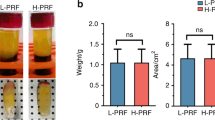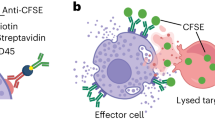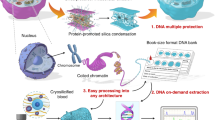Abstract
FREEZE drying is generally accepted as the most convenient and often the best method for the preservation of bacteria and viruses. With mammalian cells, the situation is different and cells such as lymphocytes have to be stored in liquid nitrogen, a method that is cumbersome and inconvenient and which makes transport of such cells particularly difficult. Up to the present, there has to our knowledge been only a single report of successful recovery of function following rehydration of a freeze dried nucleated mammalian cell. This was by Meryman and Kafig in 19591 using spermatozoa, but neither they2 nor other workers3 have been able to repeat this work. Freeze drying of non-nucleated mammalian cells, such as erythrocytes, has been more successful, however, and both Meryman4 and Greaves3 have reported the lyophilisation of small numbers of these cells.
This is a preview of subscription content, access via your institution
Access options
Subscribe to this journal
Receive 51 print issues and online access
$199.00 per year
only $3.90 per issue
Buy this article
- Purchase on Springer Link
- Instant access to full article PDF
Prices may be subject to local taxes which are calculated during checkout
Similar content being viewed by others
References
Meryman, H. T., and Kafig, E., Nature, 184, 470–471 (1959).
Meryman, H. T., in Cryobiology (edit. by Meryman, H. T.), 609–663 (Academic Press, London and New York, 1966).
Greaves, R. I. N., J. Pharm. Pharmac., 14, 621–640 (1962).
Meryman, H. T., Ann. N.Y. Acad. Sci., 85, 729–734 (1960).
Lovelock, J. E., Biochim. biophys. Acta, 11, 28–36 (1953).
Greiff, D., and Rightsel, W. A., in Cryobiology (edit. by Meryman, H. T.), 697–728 (Academic Press, London and New York, 1966).
Damjanovic, V., and Thomas, D., Cryobiology, 11, 312–316 (1974).
Cunningham, A. J., and Szenberg, A., Immunology, 14, 599–600 (1968).
Flosdorf, E. W., Freeze-drying (Reinhold Publishing Corporation, New York, 1949).
Baker, P. R. W., J. Hyg. (Camb.), 53, 426–435 (1955).
Nathans, D., Proc. natn. Acad. Sci. U.S.A., 51, 585–592 (1964).
Billingham, R. E., and Medawar, P. B., J. exp. Biol., 29, 454–468 (1952).
Rey, L., in Traite de Lyophilisation (edit. by Rey, L.), 387–401 (Hermann, Paris, 1960).
Greaves, R. I. N., in Advances in Freeze-drying (edit. by Rey, L.), 95–101 (Hermann, Paris, 1966).
Author information
Authors and Affiliations
Rights and permissions
About this article
Cite this article
DAMJANOVIC, V., EDWARDS, D. & THOMAS, D. Recovery of haemolytic plaque-forming cells after freeze drying. Nature 253, 116–119 (1975). https://doi.org/10.1038/253116a0
Received:
Revised:
Issue Date:
DOI: https://doi.org/10.1038/253116a0
Comments
By submitting a comment you agree to abide by our Terms and Community Guidelines. If you find something abusive or that does not comply with our terms or guidelines please flag it as inappropriate.



